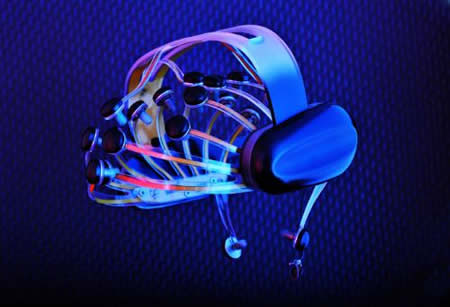Easier Neuromarketing Studies with Mynd
A key limitation of neuromarketing studies that employ brain scan technology has been convenience. fMRI, of course, presents major problems: ultra-costly equipment, a noisy and confined space, inability to move, etc. EEG, which uses external electrodes in a cap-like array, has been the simpler, faster approach, but fully wiring up a person has still been a bit cumbersome. Now Neurofocus has pushed EEG technology forward with their new Mynd™ headset. According to the firm, this new headset offers major advantages over past technology:
- Full-brain coverage with dense-array EEG (electroencephalographic) sensors. Full-brain measurement is the universal neuroscientific standard applied in the world’s premier laboratories and educational institutions.
- Within seconds of slipping the user-friendly headset on, a consumer’s brainwave activity is captured across the full cortex.
- Wireless transmission of brainwave signals; capable of interfacing with any Bluetooth-enabled mobile communications device.
- Dry “smart” electrodes (sensors), eliminating the use of gels and enhancing signal quality by introducing novel technological breakthroughs.
- Enables first full-brain coverage home panels for market research.
- Comfortable, lightweight, aesthetically pleasing modular design with easily-replaceable sensors.
[From NeuroFocus Announces World’s First Wireless Full-Brain EEG Measurement Headset: Mynd™
There’s little doubt that convenience factors such as dry electrodes and easy portability will facilitate studies that more closely simulate normal, real-world behaviors like shopping in a supermarket or watching TV in a home setting.
In addition to neuromarketing uses, there may be clinical applications for the new headset. The European Tools for Brain-Computer Interaction consortium (TOBI) will use Mynd as part of developing technology to assist people with neurological disabilities.

